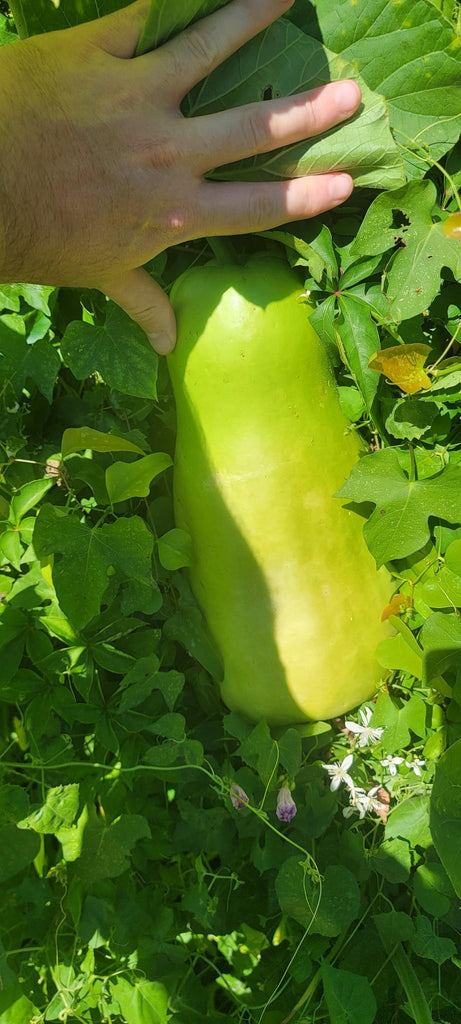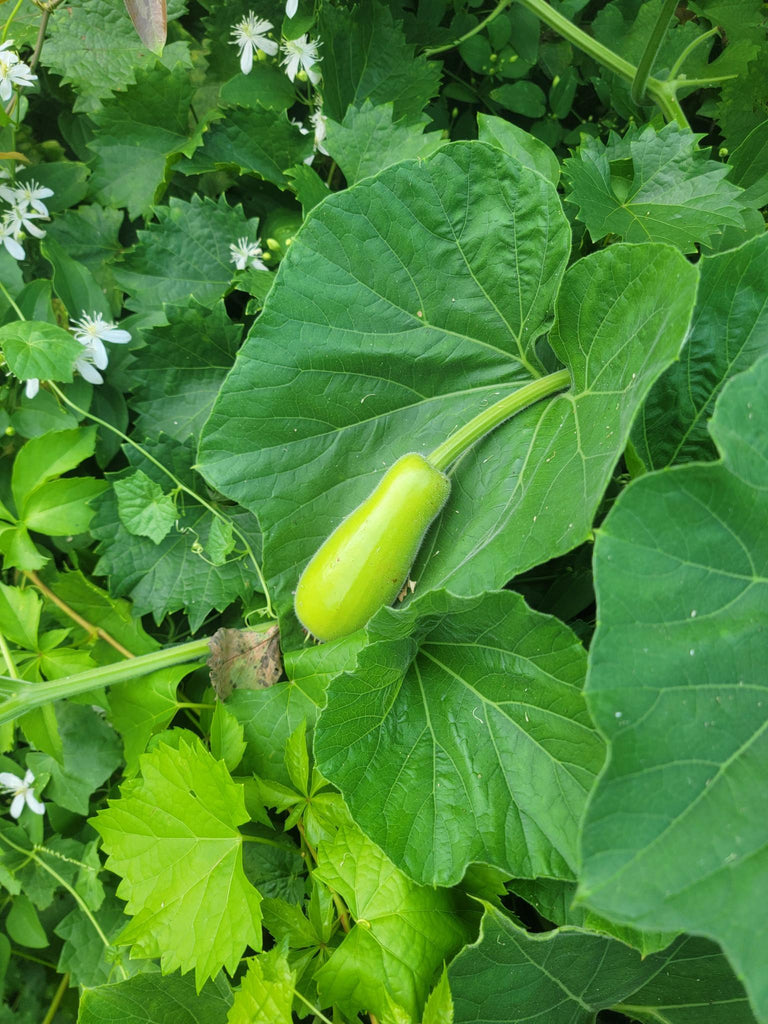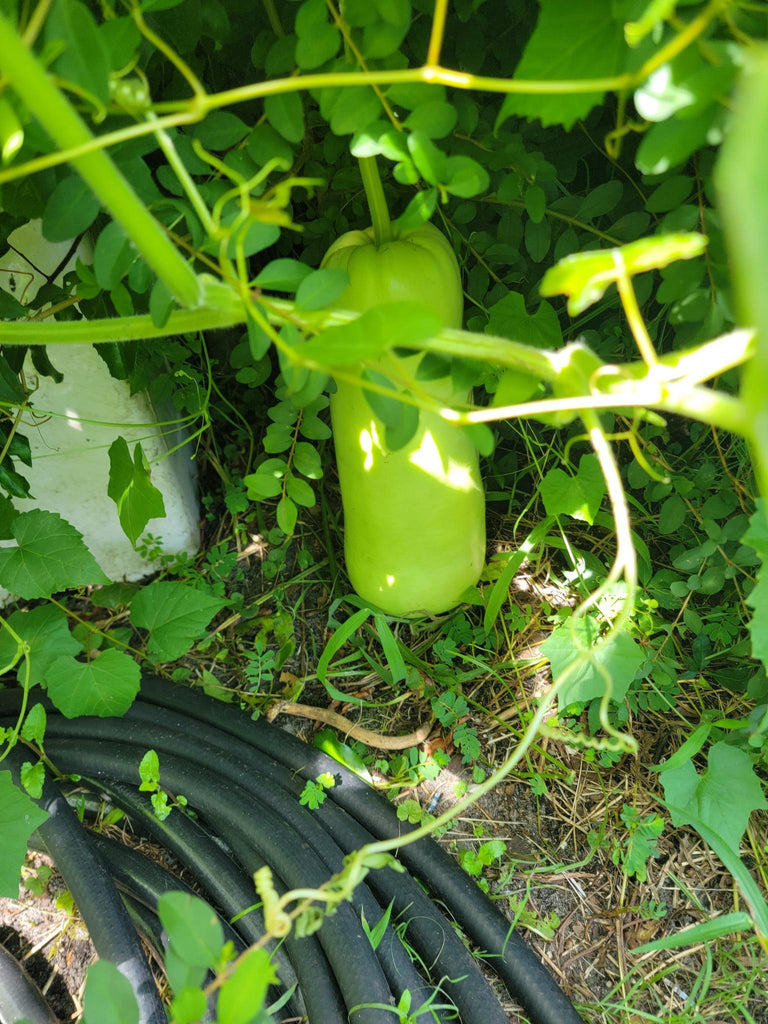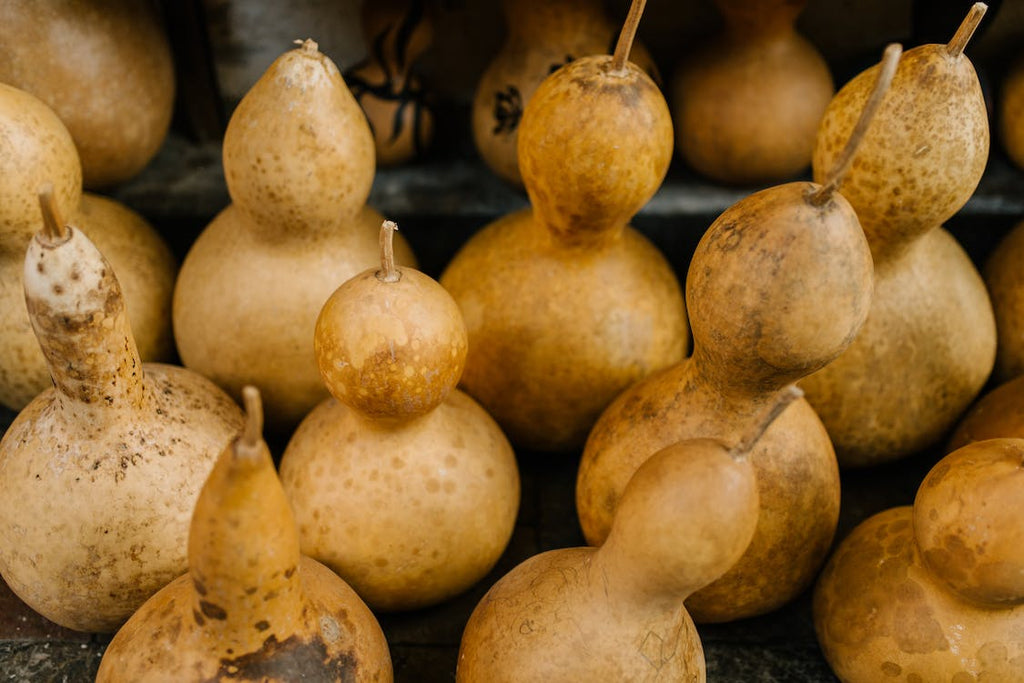
Gardening is a chance to connect with things beyond ourselves: nature, history, deep time, and other cultures to name a few. Every plant has a story, and in planting and caring for them we can explore and even to a small degree be part of that story. Back in the spring, we posted a blog about growing Chinese vegetables at home—including calabash. Our calabash vines have taken off, growing long and healthy and producing dozens of fruit. In learning how to grow and use calabash, we learned a lot about the unique history of that plant. In this blog, we’re going to try and pass that knowledge on to you, in the hopes that it will perk your interest and maybe get you to grow your own calabash. Let’s dig in!
What is Calabash?
Also known as bottle gourd, birdhouse gourd, or white flower gourd, calabash (Lagenaria siceraria) is a member of the Cucurbitaceae family, which also includes more popular garden plants like cucumbers, squash, and many kinds of melons. It is not related to the calabash tree (Crescentia cujete), which does have a similar looking fruit.

Calabash has an interesting history. An ancient plant—it originated somewhere in East Asia roughly 9,000 years ago—calabash was one of the first plants primarily grown for reasons other than food. While the fruit is edible (we’ll talk about that in a moment), when dried the heavy, waterproof rind makes the calabash gourd useful for making tools, containers, bowls, and even musical instruments. As a dual-use plant, calabash spread quickly across Asia, Africa, and Europe, and even reached the Americas long before Columbus’s first voyage. No one knows for sure how this happened; theories include early hunter gatherers carrying the wild seeds with them when they migrated across the Bering Strait land bridge between Asia and North America, and natural processes such as ocean currents and migrating birds carrying the fruits and seeds across the Atlantic from Africa to the New World.

Today, calabash is still hugely popular around the world, grown and used for its fruit, leaves, gourds, and more.
Growing and Using Calabash
Calabash is relatively easy to grow at home—it likes many of the same conditions as its squash, cucumber, and watermelon relatives. It’s also relatively resistant to vine borers and squash beetles, and tolerates heat well. With all that having been said, there’s one caveat: calabash is an aggressive vining plant, which grows quickly and spreads everywhere. This may be a consideration for gardeners with smaller spaces—at the time of this writing our calabash vines are 50ft/15m long and still growing! However, the leaves are lovely, large and soft, and the night-blooming flowers are quite beautiful.
Calabash likes rich, well-drained soil, and should be planted when the weather is warm enough to put out other Curcurbitaceae plants—so about two weeks after last frost when the soil is warm enough. We had good luck starting them indoors a month or six weeks ahead of time; the rapid grow starts a little later when the plant is established. A good balanced fertilizer or compost also helps, so feed your calabash like you would your watermelon.

Also like watermelon, calabash do well in heat but they really do like a fair amount of water. This is especially true during heat waves—heavy watering can help keep them growing and thriving even if the weather isn’t fully cooperative. Our calabash plants are doing well in direct sun, but we think they could handle partial sun if it came to that.
As with the vines, calabash fruit grow quickly. While the plants may take a long time to start producing fruit, once the fruit start coming in they grow quickly and prolifically. The big question with calabash fruit is when to harvest. You can pick the fruit at nearly any stage of development, as some kinds of calabash grow quite large fruit indeed. As the fruit ripens, the rind will get harder and the seeds will get larger and more prominent, meaning that the edible flesh will be more time consuming to harvest. Young fruit can be eating skin, seeds, and all, just like a cucumber. If that’s your desires, harvest them when the skin is still soft and they’re the size of a large cucumber or small melon.

If you want the fruit to become gourds, you’ll need to let them ripen fully and dry out. We’re still experimenting with this, so we’d love to hear from anyone who has more experience doing so. Calabash gourds are useful, so we’ll do a followup blog when we get some and let you know what we make with them!

Leave a comment